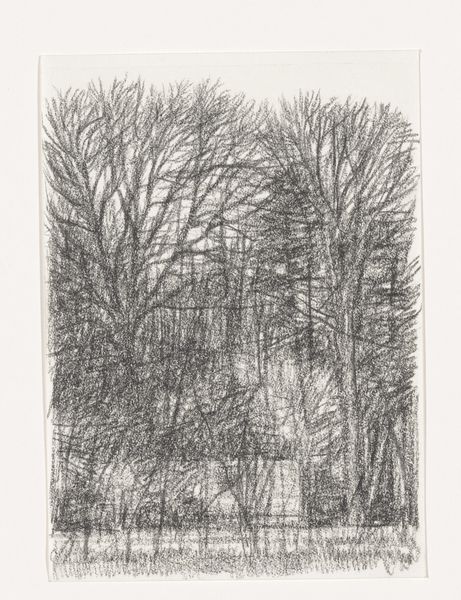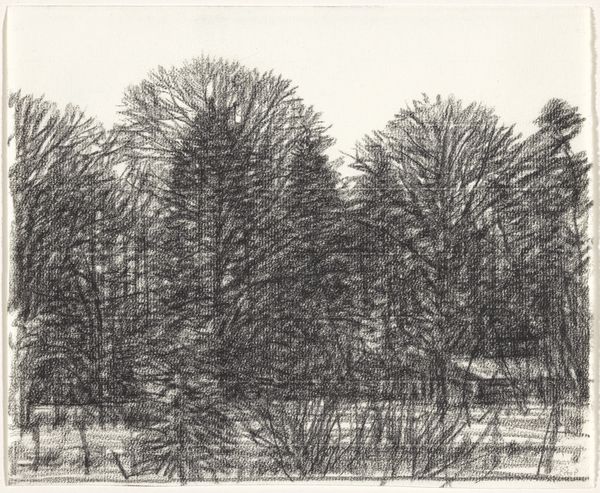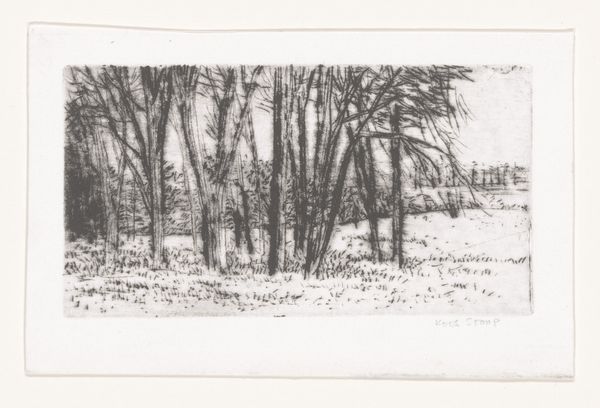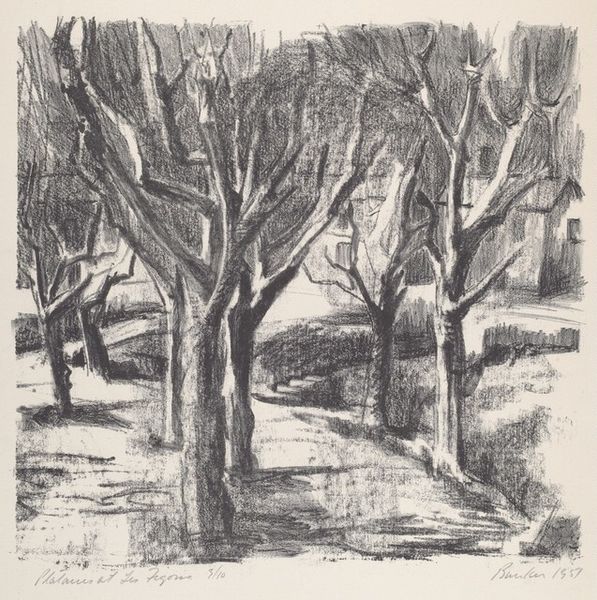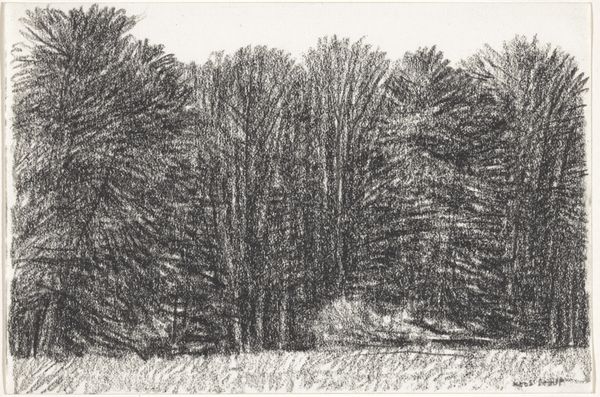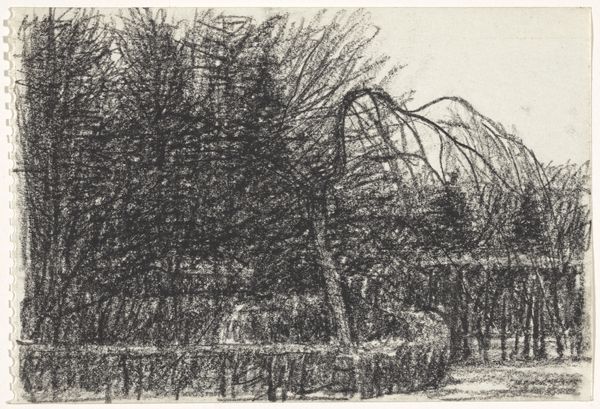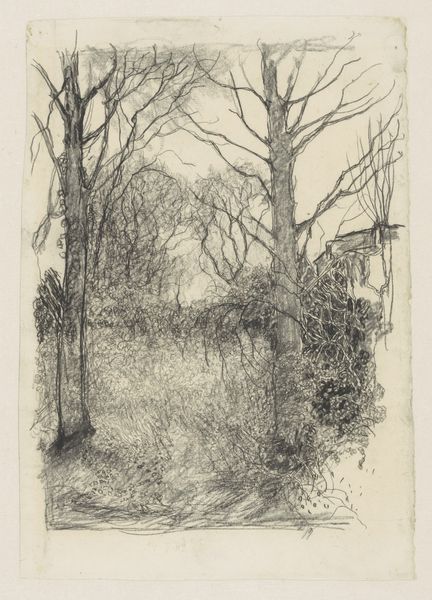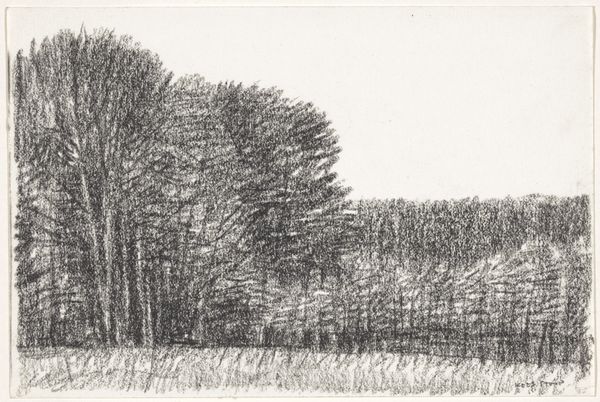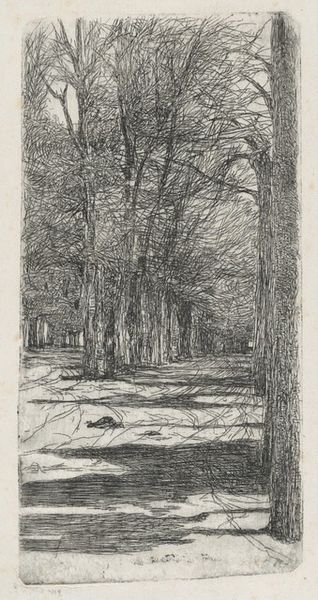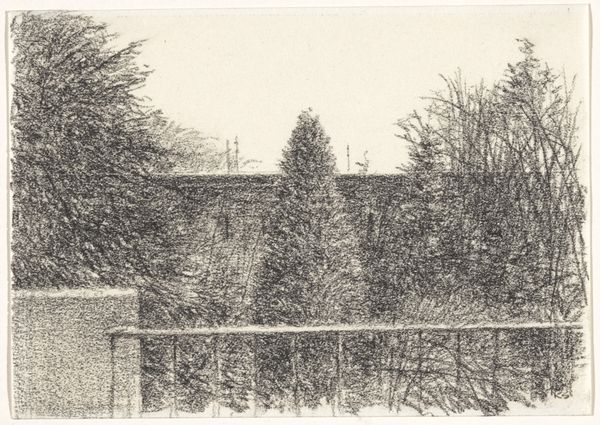
drawing, pencil
#
drawing
#
pen sketch
#
pencil sketch
#
landscape
#
geometric
#
pencil
#
line
#
realism
Dimensions: height 114 mm, width 160 mm
Copyright: Rijks Museum: Open Domain
Curator: Let's talk about Kees Stoop’s “Bomenrij in veld en haag”, which roughly translates to "Row of Trees in Field and Hedge," created sometime between 1939 and 2009. What do you see? Editor: Hmm, a sort of brooding intimacy, almost claustrophobic despite being outdoors. It's the texture—that heavy, insistent pencil. Gives everything a muted, almost mournful feeling. Curator: It's definitely the application of pencil that pulls us in. Stoop seems less interested in capturing precise botanical details and more invested in the methodical, almost industrial, accumulation of graphite. It pushes past representation into something almost… tactile. You want to run your fingers across the paper. Editor: Exactly! And the implied labor is interesting too. Look at how repetitive it is! Like agricultural work. You could compare this kind of drawing practice to weaving or sowing seeds – an accumulation of simple marks repeated over and over, very disciplined work. What kind of paper is this, do you know? Curator: It's just paper—nothing particularly remarkable about it, which keeps the focus tightly on the process itself and on Stoop's engagement with form. See how the dark, almost uniform columns of the trees frame a light at the far end? I wonder what kind of scene do you envision at the end of this journey through nature? Editor: The geometric forms you mention—the way he forces unruly nature into regimented rows feels…controlled, somehow. Was Stoop commenting on humankind’s tendency to tame the wild? You think about industrialization, forestry as a commodity, these kind of issues must’ve been around when Stoop made this. Curator: He’s definitely showing us the artifice of perspective and arrangement within this rural scene, rather than just offering a simple "snapshot" of nature. His way of working offers an intimacy in landscape art and evokes contemplation. Editor: Yes, exactly! So, ultimately, it's not about the *what*—trees and hedges—but the *how*. The methodical build-up of material and Stoop's focused physical commitment leaves us more fulfilled and contemplative as a result. Curator: Ultimately, it's an illustration in balance and precision. I would agree! A compelling encounter between thought, method, and natural form that lingers in memory, I believe.
Comments
No comments
Be the first to comment and join the conversation on the ultimate creative platform.


